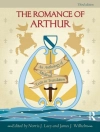This edition includes a modern introduction and a list of suggested further reading.
In
The Pathfinder, James Fenimore Cooper tells a thrilling tale of naval adventure, rival love, and wilderness experience that captures the rough-and-tumble life on the shores of Lake Ontario during the French and Indian War. Cooper is the foremost author of historical romance in American literature, and
The Pathfinder remains one of the finest examples of the genre.
The Pathfinder stands alone as an example of Cooper’s unique ability to depict how the combination of tenderness and violence brings order to the American frontier.
Mengenai Pengarang
James Cooper (he added the Fenimore when he was in his 30s) was born September 15, 1789, in Burlington, New Jersey, to William Cooper and Elizabeth Fenimore Cooper. In 1790 the family moved to the frontier country of upstate New York, where William established a village he called Cooperstown. Although cushioned by wealth and William’s status as landlord and judge, the Coopers found pioneering to be rugged, and only 7 of the 13 Cooper children survived their early years. All the hardship notwithstanding, according to family reports, the young James loved the wilderness. Years later, he wrote The Pioneers (1823) about Cooperstown in the 1790s, but many of his other books draw deeply on his childhood experiences of the frontier as well.
Cooper was sent to Yale in 1801 but he was expelled in 1805 for setting off an explosion in another student’s room. Afterward, as a midshipman in the fledgling U.S. Navy, he made Atlantic passages and served at an isolated post on Lake Ontario. Cooper resigned his commission in 1811 to marry Susan Augusta De Lancey, the daughter of a wealthy New York State family. During the next decade, however, a series of bad investments and legal entanglements reduced his inheritance to the verge of bankruptcy.
Cooper was already 30 years old when, on a dare from his wife, he became a writer. One evening he threw down, in disgust, a novel he was reading aloud to her, saying he could write a better book himself. Susan, who knew that he disliked writing even letters, expressed her doubts. To prove her wrong he wrote Precaution, which was published anonymously in 1820. Encouraged by favorable reviews, Cooper wrote other books in quick succession, and by the time The Last of the Mohicans, his sixth novel, was published in 1827, he was internationally famous as America’s first professionally successful novelist. Eventually he published 32 novels, as well as travel books and histories. Cooper invented the genre of nautical fiction, and in the figure of Nathaniel or ‘Natty’ Bumppo (Hawkeye in The Last of the Mohicans) — the central character in the five Leatherstocking Tales Cooper published between 1823 and 1841 — he gave American fiction its first great hero.
Shortly after publishing The Last of the Mohicans, Cooper moved his family to Europe, but in 1833 he returned to America, moving back into his father’s restored Mansion House in Cooperstown. He died there on September 14, 1851.
Author biography courtesy of Barnes & Noble Books.












